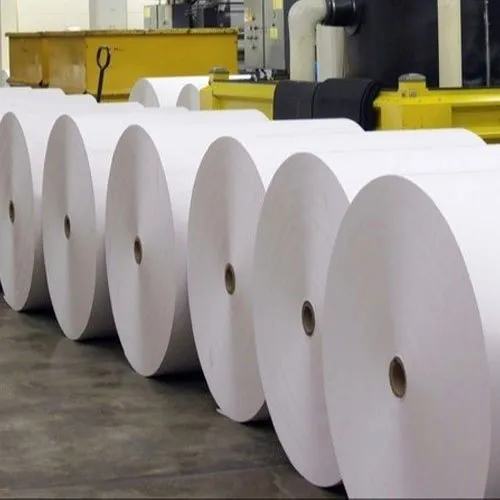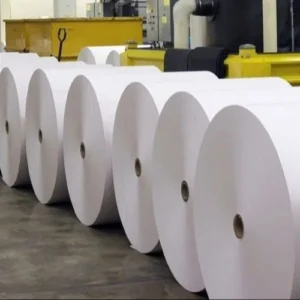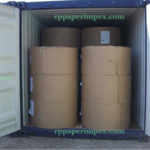How the Pulp and Paper Industry is Optimizing Cost for Success?
How the Pulp and Paper Industry is Optimizing Cost for Success?
How the Pulp and Paper Industry is Optimizing Cost for Success?: As the paper and pulp industry is one of the most important in the fast-growing global economy, the demand for its products has been sharply increasing. This industry is a beacon of the industrial modern world, manufacturing the products we need daily.
As a result of the growing competitive pressures, manufacturers in that industry are increasingly striving to find ways to decrease production costs concurrently to attain a quality output despite the tough situation of constraints on resources.
Nevertheless, in the changing market conditions and the growing competition, profitability and sustainability have become the major issues. In this article of the blog, we will discuss How the Pulp and Paper Industry is Optimizing Cost for Success.

Multifarious Ways Of Reducing the Cost of Paper Manufacturing
Some techniques have the potential to greatly decrease pulp and paper manufacturing costs. Adopting an integrated approach that brings together the various techniques will allow the institutions to maximize savings without having to compromise on the outcome or performance. Thus, here we will get to know about How the Pulp and Paper Industry is Optimizing Cost for Success by adopting several strategies that are discussed below:
Using Alternative Raw Materials
Utilizing alternative raw materials offers a potential cost-saving strategy for paper manufacturing. Here are some alternatives to traditional wood pulp:
- Agricultural waste (sugarcane bagasse, wheat straw, corn stover): Low-cost, sustainable fibre source for paper production.
- Recycled paper: Reduces reliance on virgin wood pulp, and lowers waste, and disposal costs.
- Non-wood fibres (bamboo, hemp, cotton): High-quality paper alternative, more sustainable than wood pulp.
- Industrial by-products (black liquor): Utilized in paper production, derived from the pulping process.
- Alternative raw materials: Offer cheaper, sustainable fibre sources, reducing paper manufacturing costs.
However, ensuring quality is key when using alternative materials. Compliance with regulations is crucial and this builds customer loyalty and increases profits, this is how the Pulp and Paper Industry is Optimizing for Success.
Improving Production Efficiency
Among 6 ways to optimize costs in pulp and paper manufacturing is to enhance production efficiency. Here are some strategies companies can implement:
- Lean manufacturing: The school plans to discard the waste, simplify the workflows, and improve the processes.
- Automation: Simplifying the production process, minimizing mistakes, and cutting labour costs, respectively.
- Predictive maintenance: Spot equipment problems before they arise, so that they can be easily fixed and the machine downtime can be minimized.
- Continuous improvement: The regular evaluation of the processes, the feedback collection, and the implementation of improvements are the other ways of things that need to be done.
- Training and development: It is encouraged to invest in employee skills to enhance productivity and lower errors.
- Quality control: Make sure the customer is happy, the product is of the same quality every time, and reduce the losses.
On the other hand, the improvement of production efficiency brings down the expenditures, increases the productivity, and improves the product quality. Nevertheless, the modifications should not affect the product quality or safety.
Reducing Energy Consumption
Reducing energy consumption is pivotal in cutting paper manufacturing costs. Here are strategies for achieving this:
- Implement energy-efficient equipment: Upgrade motors, pumps, and compressors to reduce energy usage and operating costs.
- Use renewable energy: Adopt solar or wind power to lower energy expenses and enhance sustainability. Consider on-site renewable energy systems.
- Optimize equipment use: Minimize idle time and upgrade equipment with variable speed drives for energy efficiency during low-demand periods.
- Improve insulation: Enhance insulation in equipment and buildings, and install energy-efficient windows and doors to reduce heat loss.
- Implement energy management systems: Use software to monitor energy consumption, track costs, and identify efficiency opportunities.
- Train employees: Educate staff on energy-saving practices, like turning off equipment when not in use, to minimize energy waste.
Lowering energy consumption cuts operating costs and boosts environmental sustainability. Yet, changes should not compromise product quality or safety.
Optimizing Raw Material Usage
The top priority in this regard is to be able to utilize the raw material in the most efficient way to cut down the paper manufacturing costs. Here’s how companies can do it:
- Reduce waste: Apply precision cutting technique to cut the material as accurately as possible to reduce the amount of waste material.
- Improve material selection: Collaborate with suppliers to select cost-effective, high-quality materials.
- Enhance inventory management: Allow inventory management software to cut the amount of raw material that is stored in the backyard.
- Reuse and recycle: Use of recycled materials to lessen the demand for virgin ones.
- Implement process improvements: Introduce remote glass systems that can enhance the raw material efficiency.
Hence, using the raw materials optimally both decreases the cost and improves sustainability. Despite that, modifications must not affect the product quality and safety.
Implementing Sustainable Practices
The main reason why sustainable practices are important is that they can help in reducing the expenses of paper manufacturing. Here are some ways that companies can implement sustainable practices:
Use renewable energy sources: The sentence can be rephrased as Solar or wind power is a good choice to lower energy costs and to reduce the carbon footprint.
- Reduce water consumption: The employment of closed-water systems will be useful in cutting down the water usage and will be the solution to coming down the water bill.
- Use recycled materials: The effective use of recycled paper and other materials will help to decrease the dependence on virgin resources and save costs.
- Implement waste reduction strategies: Present the ways of recycling and composting so that it becomes easier to protect the environment and save on the expenses of waste disposal.
- Implement eco-friendly packaging: Choose to use biodegradable or compostable packaging materials to cut down the environmental impact and at the same time, you will be able to save some costs.
Thus, this is How the Pulp and Paper Industry is Optimizing Cost for Success by adopting sustainable practices to reduce environmental damage, reduce expenses and also increase the image. It also gets the eco-minded people as the customers.
Investing in Research and Development
Research and development (R&D) is the key factor in the reduction of paper manufacturing costs. Here’s how companies can do it:
- Develop new manufacturing processes: Come up with new ways to make procedures more effective, reduce wastage, and cut costs.
- Explore new raw materials: The creation of industrial materials without agricultural residues is possible with other resources, thus, it would be a way of reducing the use of virgin resources and lowering the costs
- Develop new products: Make of lighter or higher-quality paper, which will then help to increase the revenue and possibly cut production costs by improving efficiency.
- Improve quality control: Improve the quality control procedures to reduce waste and hence to boost efficiency, which will bring a significant cost saving.
- Develop new technologies: Automate or AI to increase the efficacy, cut down the expenses and facilitate the processes.
The initial cost of R&D may be high, but in the long term, it will be worth it. Through the creation of new procedures, substances, products, and technology, the reduction of costs and the enhancement of business competitiveness can be realized.
What is the Importance of Reducing the Cost of Paper Manufacturing?
Reducing the cost of paper manufacturing is important for several reasons, including:
- Reducing manufacturing costs makes profits go up, thus, creating opportunities for R&D, efficiency improvements and business expansion.
- The lower prices or higher-quality products of products are the factors of the cost reduction which increases the competitiveness of the products.
- Cutting the costs of manufacturing can help in cutting waste and resource use, thus the environment will get a great benefit.
- The cut in prices makes the products cheaper, thus increasing the demand and the market size.
- Cutting down costs can result in more production, business growth and job creation which in turn, will lead to economic growth.





